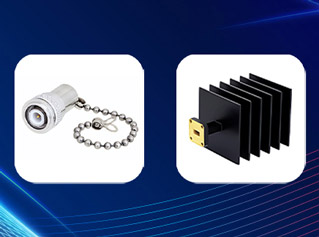-
 Common waveguide components: waveguide terminals
Mar , 18 2025
Common waveguide components: waveguide terminals
Mar , 18 2025
2. Waveguide Terminals 2.1 Performance Characteristics Key electrical parameters include frequency range (determined by waveguide dimensions), VSWR, and input power handling. Physical attributes like size, weight, and material selection (e.g., corrosion-resistant plating) are equally vital. Thermal management strategies vary: 2.2 Materials and Applications A waveguide terminal typically consists o...
View more
-
 Analysis of Directional Coupler Applications: Core Technology in Modern Communication and Testing Systems
Mar , 26 2025
Analysis of Directional Coupler Applications: Core Technology in Modern Communication and Testing Systems
Mar , 26 2025
In wireless communications, radar systems, RF testing, and other fields, the directional coupler stands as a critical passive component, enabling unique signal separation and monitoring capabilities that make it indispensable in modern electronic systems. This article delves into the working principles, core advantages, and real-world applications of directional couplers across industrie...
View more
-
 Understanding Jumper Cables in RF Systems
Apr , 07 2025
Understanding Jumper Cables in RF Systems
Apr , 07 2025
What They Are and Why They Matter Jumper cables, also known as RF jumpers or feeder jumpers, are short coaxial cables used to connect various components in an RF transmission system. Though seemingly simple, they play a crucial role in ensuring signal integrity, mechanical flexibility, and overall system performance in wireless infrastructure. 1. What is a Jumper Cable? A jumper cable is a flexibl...
View more
-
 Active vs Passive RF Components: Key Differences and Applications
Apr , 14 2025
Active vs Passive RF Components: Key Differences and Applications
Apr , 14 2025
Introduction In wireless communication, radar systems, and IoT devices, radio frequency (RF) components are critical for signal processing. Understanding the differences between active RF components and passive RF components is essential for circuit design, cost optimization, and performance enhancement. This article explores their core distinctions through technical ...
View more
-
 What is an RF Filter?
Apr , 18 2025
What is an RF Filter?
Apr , 18 2025
In high-frequency electronic systems like wireless communications, radar systems, and medical devices, RF filters (Radio Frequency Filters) act as "traffic controllers" for signals. These critical components precisely screen specific frequency ranges, ensuring optimal device performance. This article breaks down the core technology behind RF filters and addresses key selection criteria e...
View more
-
 What is a Directional Coupler?
Apr , 24 2025
What is a Directional Coupler?
Apr , 24 2025
In RF and microwave systems, a directional coupler is an essential passive component that enables signal sampling, monitoring, and routing without disturbing the main transmission line. This article explains what a directional coupler is, how it works, and why it's a critical element in modern wireless communication systems. What is a Directional Coupler? A directional coupler is a four-port RF de...
View more
-
 5G-Advanced Accelerates New Requirements for In-building RF Infrastructure
Apr , 28 2025
5G-Advanced Accelerates New Requirements for In-building RF Infrastructure
Apr , 28 2025
As 5G-Advanced (5G-A) technology emerges, it brings higher speeds, lower latency, and smarter network capabilities, reshaping expectations for in-building wireless systems. Modern facilities—such as offices, airports, and hospitals—now require more advanced Distributed Antenna Systems (DAS) capable of supporting higher frequency bands and broader bandwidths. Traditional infrastructure must evolve....
View more
-
 Which Is Better: Directional Coupler or Tapper?
May , 08 2025
Which Is Better: Directional Coupler or Tapper?
May , 08 2025
In RF and microwave systems, power distribution is a critical aspect that directly impacts system performance, reliability, and design flexibility. Two of the most commonly used passive components for signal splitting and power monitoring are directional couplers and tappers. While they serve similar purposes in many systems, they differ significantly in structure, application, and performance. Un...
View more
 Common waveguide components: waveguide terminals
Mar , 18 2025
Common waveguide components: waveguide terminals
Mar , 18 2025